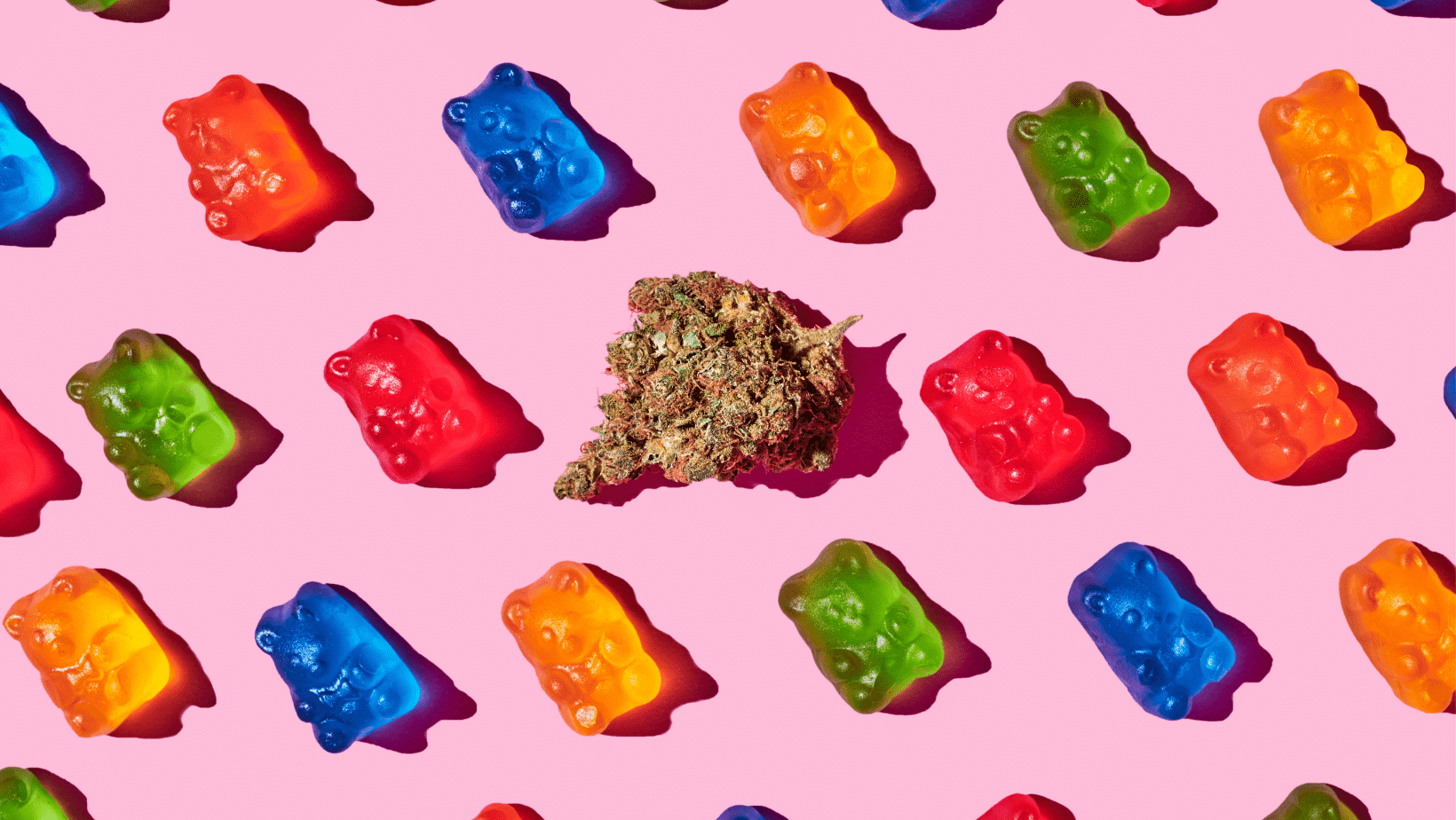In 2022, gummy edibles made up a 66 percent share of all edible sales across BDSA-tracked markets*, meaning that the gummy category is the biggest cannabis edible subcategory by a wide margin. But as many in the industry will tell you, choosing a winning form factor is just the first step to a successful cannabis edible brand. To stay at the head of the pack in a competitive category like gummy edibles, a brand must consider consumer attitudes, pricing, shopping trends and granular product characteristics like minor cannabinoid content.
Cannabis edible consumer trends
Sure, inhalables are still top dog, but these days a significant share of consumers report using and preferring edibles. BDSA Consumer Insights data updated Feb. 2023 shows that two-thirds of consumers in adult-use states claimed past six-month edible consumption, compared to 72 percent who report inhalable consumption. When asked about their preferred method of consumption, 33 percent prefer edibles, compared to 58 percent who prefer inhalables.
When we drill down into the data a bit, gummy products are the clear winner among edible consumers.In fall 2022, 69 percent of edible consumers claim to have used gummies, while 44 percent prefer gummies. The next most consumed and preferred edible subcategory was baked goods, with ~39 percent reporting past six-month consumption and ~14 percent claiming to prefer baked goods.
BDSA Consumer data show that ease of use is a top reason for edible consumers to choose gummy edibles (35 percent of edible consumers). This was closely followed by “taste/flavor” (32 percent), then “controlled dosages” (18 percent).
Top trends in cannabis gummy pricing
One of the major stories of 2022 was price compression, as almost all cannabis markets saw average retail prices decline from Q3 2021 on. Per BDSA Retail Sales Tracking data, average retail prices for gummy edibles fell 10.5 percent between Q4 2021 and Q4 2022. This decline was less dramatic than that seen across the aggregate of all categories, as BDSA data show 22 percent price compression across all categories over this same period.
One trend in edibles helped to counter the falling product prices: the growing prevalence of minor cannabinoids in edible products. Products that contain a minor cannabinoid, on average, are priced 15 percent higher than the average product without them.
Minor cannabinoids taking a major role
The rise of minor cannabinoids has been a major trend over the past two years, with more and more brands using cannabinoids like CBN and CBG in cannabis products. While inhalable and topical products are also touting minor cannabinoids, c, they have taken up a much more significant role in the edible category, particularly gummies.
When we dig into BDSA Retail Sales Tracking data on minor cannabinoids, we see that CBN and CBG products went from having a negligible presence in the gummy edible space in June of 2020, to making up ~14 percent of gummy dollar sales in December 2022 across mature markets (CA, CO, NV, and OR.
A look at the list of top brands in mature markets also shows a trend towards CBN and CBG taking a major role in the gummy edible market. Californiais often seen as a market to watch for innovation, and minor cannabinoids make a particularly strong showing in the Golden State. BDSA data show that all of the top ten gummy brands in California for Q4 2022 offered at least one product with CBN or CBG.
Diving into the edible basket
Looking into the basket dynamics of the edible category gives us a more detailed look into the role that candy edibles play at retail. BDSA Basket Analytics data from California in Q4 2022 show that the average basket size for baskets containing gummy edibles was ~$33,. So lower than the average basket size for all edible baskets (which was ~$38), but higher than the average basket size for chocolates and infused baked goods. When looking across all edible-containing baskets, gummies were present in 74 percent of baskets, giving them the highest basket penetration of any edible form factor.
Drilling down into basket contents shows that 66 percent of gummy edible baskets contained multiple items and multiple categories, while 19 percent were multiple item, single category baskets, and 15 percent were single-item baskets. Basket Analytics show that vapes were the most common item to be purchased alongside candy edibles, with vapes showing up in 14 percent of candy edible baskets.
With the edible category set to bring in ~$6.6 billion in sales in 2027, brands looking to have a balanced product portfolio may not want to ignore the opportunity that the edible market (and the popular gummy category) has to offer. But seeing success in the highly competitive gummy market takes more than flashy packaging and a sugary infused treat. Brands looking to make the most of the gummy edible space must take a data-based approach to pricing, product formulation, and consumer-facing materials, or risk getting lost in the sea of products in this extremely popular category.
*AZ, CA, CO, FL, IL, MA, MD, MI, MO, NV, NJ, NY and OR




